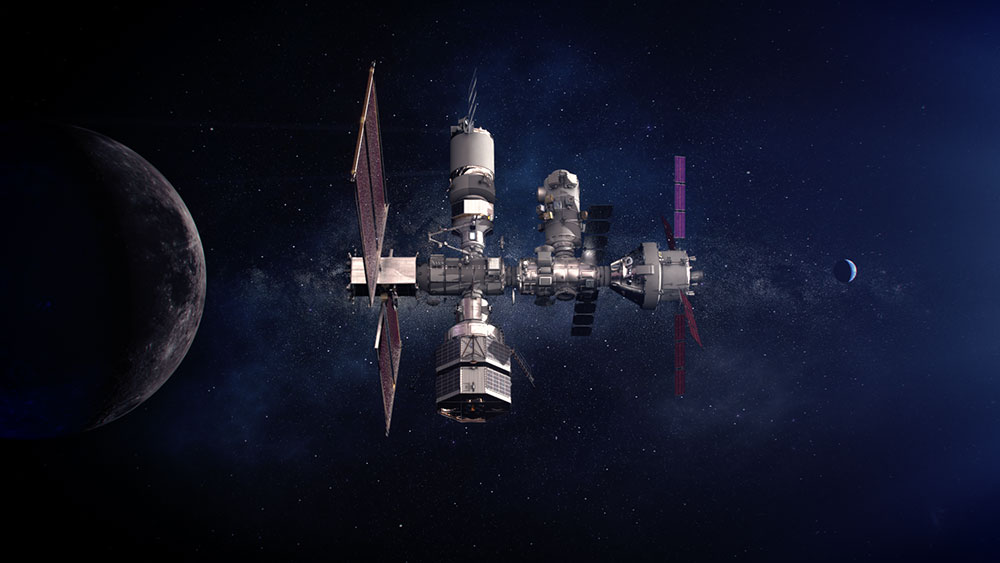
It’s been over 50 years since Apollo 11 landed on the moon and we heard the famous words, “One small step for man, one giant leap for mankind.”
Now, in collaboration with international and commercial partners, NASA is working to send the first woman and the first person of color to the moon and beyond. The ongoing missions of the Artemis Program involve innovating and using new technologies to return to the moon and establish a long-term lunar presence with the ultimate goal of sending the first astronauts to Mars.
The first step, aptly named Gateway, is an outpost that will orbit the moon and provide long-term support for astronaut expeditions and scientific investigations. Gateway will also serve as a dock for deep-space transportation vessels such as landers or larger spacecraft preparing to make the trip to Mars.
Joe Caram ’86, ’89 is one of a handful of former students from the College of Engineering at Texas A&M University working on Gateway. Caram, who received both his degrees from the Department of Aerospace Engineering, is the Gateway program lead for the Systems Engineering and Integration Office.

He leads a team in evaluating the performance and configuration requirements of the integrated spacecraft that form the Gateway hub for future lunar surface missions and deeper space exploration. This is complicated by the fact that the spacecraft is being designed by several international and U.S. commercial partners, and it is the responsibility of Caram and his team to ensure that all the pieces of the vessel will work together efficiently and effectively. Some of the elements his team are working on include determining how the spacecraft will perform from a power and propulsion standpoint, how it will reject heat energy, how other visiting spacecraft will operate with it and how the crew will interact with it.
Caram said that Gateway will make it easier for crews to travel to and from the lunar surface, thus expanding the ability to explore areas of the moon that humans have never visited, like the Lunar South Pole region. Additionally, testing things like innovative habitats for deep-space missions is safer and less expensive when conducted on and around the moon, where travel time is a few days compared to Mars, when it could be months or more.
“Gateway is not just a machine; it's something that provides inspiration for others,” Caram said. “It’s a continuation of the exploratory spirit, and that's what inspires me. I hope that others feel that too when they look up at Gateway and see it orbiting the moon.”
Although he didn’t know that systems engineering was where he would end up, Caram knew he wanted to be in aerospace since he watched the first astronauts set foot on the moon in 1969. As he described, from that moment in time, his passion was ignited.
His interest led him to pursue his aerospace engineering undergraduate degree at Texas A&M, where he was introduced to working in a team environment and encouraged by his professors to return for his graduate degree. With the support of several faculty, he obtained his master’s — a degree that ultimately led him to work for the very organization that he watched land on the moon all those years ago.
“It’s a dream come true, actually,” he said. “Knowing that I have an opportunity to participate in the organization that enabled the first lunar landing and to provide that inspiration for others is part of why I got into this field. I want to be part of what enables the next generation to come forward and advance us even further.”